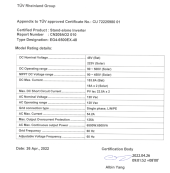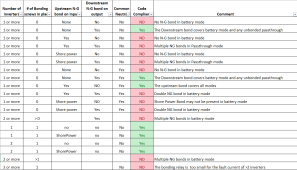FilterGuy
Solar Engineering Consultant - EG4 and Consumers
It is too early to say for sure, but it looks like the ODM builds them in batches.
I agree there are many ways to wire it, but I am not asking them how to wire it. I am asking whether the product supports a common neutral arrangement. There is an important distinction between the two. I am asking what the product specifications are, not how to wire it.
In order for an electrition (Or anyone else) to safely set the system up, they must know what the unit specs are.
There is no way a seller is going to post a "This is the way to wire it" answer because that answer is subject to a huge variety of laws globally.
They said they will post a video of how the NG bonding works in the unit. It's then going to be up to the electrician to make it code compliant to the use case.
I don't see how this response is the negative you are painting it out to be. They said they are going to give the info. Is that not what you wanted?
I agree there are many ways to wire it, but I am not asking them how to wire it. I am asking whether the product supports a common neutral arrangement. There is an important distinction between the two. I am asking what the product specifications are, not how to wire it.
In order for an electrition (Or anyone else) to safely set the system up, they must know what the unit specs are.




